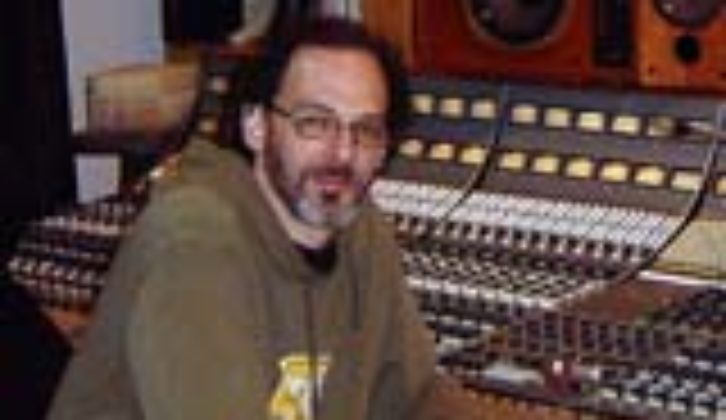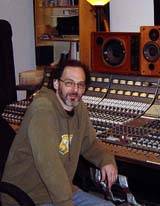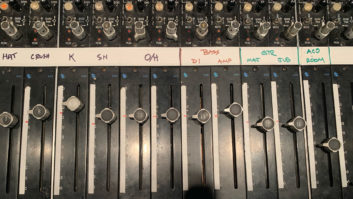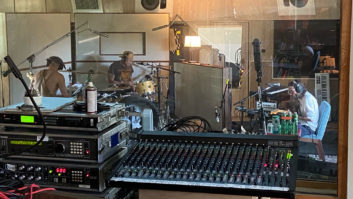

Mix engineer Andrew Scheps
The Red Hot Chili Peppers debuted at Number One on the Billboard Top 200 for the first time ever with their latest album, Stadium Arcadium. Half of the double album was mixed by Andrew Scheps (pictured), who used API modules to bring out the best in the analog tape recordings.
Scheps spent the past year engineering the Red Hot Chili Peppers’ tracking sessions with Ryan Hewitt, who also mixed the other half of the new album. Scheps used API’s 2520 op amp (which is at the heart of the 525 compressor), 550A discrete 3-band EQ and 560 graphic EQ modules on all of the tracks that he mixed.
“The 525s were my main compressors for all of the main electric guitars, on pretty much every single song that I mixed,” Scheps reveals. “They were just phenomenal. I don’t know if it’s really specific to John Frusciante’s guitar tones, but they worked every single time to really bring out the guitars without making them sound compressed.”
Scheps states that any given song could feature anywhere between a single guitar track to 30. “It really depended on the song. But generally there would be one or two main guitars for the track and then the rest would really be smaller overdub parts that would combine to make something bigger than everything else.”
With so many component parts, Scheps used the 525 compressors to neatly shoehorn everything into the final mix. “John is so meticulous during tracking that it was more a question of how can I mix these without changing the sound so that it’ll work better in the bigger context. The 525s were just brilliant for that. It doesn’t sound processed, compressed or EQ’d too much.”
Scheps employed a graphic equalizer rather than a parametric equalizer, preferring the API 560. “Although you would think you would go with parametrics, I’ll use them for surgical EQ. If I really need to get rid of a particular frequency that happens to fall where the 560 has a band, I’ll crank that one down quite a bit and boost the two around it, which will tighten up the Q on the one that you’re cutting. You can really do some great surgical stuff without using a parametric, which will tend to ring more.
“I like graphic EQs, and there aren’t that many of them,” he continues. “I love the 560 just because of the way that you can hunt around and find things. The 560s are the only great sounding graphic EQs that I use. I love the top-end. I think I used it on overheads on a few songs to really bring out the cymbals. Those were all over the mix.
“The 550s have such a character to them that you hear something and think, ‘oh, that needs a 550.’” Scheps says. “In general, it was usually guitars, sometimes snare. There were a few keyboard overdubs, and I love 550s on those—mainly Mellotron stuff.”
For more information, visit www.apiaudio.com, www.scheps.com and www.redhotchilipeppers.com.


